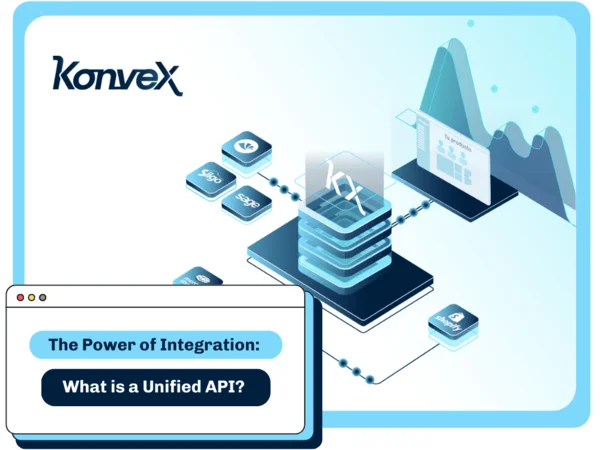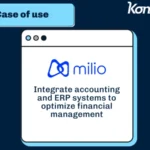Currently, we are going through a key adaptation phase, which revolves around saving money and effort by not reinventing the wheel, leveraging what already works, and avoiding high-effort developments. One of the areas where this integration is particularly important is in the realm of accounting, where precision, data, and speed are essential for a company’s financial success.
This is where the Unified Accounting Integration API comes into play, a powerful tool that enables seamless synchronization between accounting systems and ERPs (Enterprise Resource Planning).
What is a Unified API?
A unified API is a single, aggregated API that provides access to APIs from multiple software providers or systems in the same vertical and industry (such as fintech infrastructure or accounting, Human Resources, Mail APIs, etc.) in a single integration. Unified APIs also offer an interface that simplifies authentication, data transformation, error handling, and data synchronization.
Unified APIs exist to make it easier for developers to create integrations with many similar software products, for example, multiple accounting systems, as each one has its APIs and completely different documentation.
Key Aspects of a Unified API
Authentication: The great advantage of a Unified API is that it normalizes and unifies different authentication methods for each system. It provides users with an authentication system for each of the integrations offered by the API.
Normalization of data from different APIs: Unified APIs simplify integration by maintaining consistent data models and normalizing data from different providers.
For example, in the Alegra API, they can decide how to represent the first and last name of a customer consistently, even though providers have different approaches. The size and scope of these models vary depending on the market. The advantage is that regardless of the data structure of each software, the Unified API standardizes it and makes it easy to consume.
Standardized endpoints: While the concept of endpoints is important for any API, a Unified API exposes endpoints that correspond to its standardized data model. Therefore, a Unified API allows developers to access data from many API providers through a single set of unified endpoints and methods. To accommodate this, the Unified API provides endpoints that allow some basic CRUD operations (GET, POST, etc. for a REST API).
Unified API vs. Other Types of Integration Differences
Direct Integration: This is when the company wants to build its integration directly, that is, without any intermediary in the process. It is usually more expensive and takes longer, and integration support affects profitability.
«No-code» Platforms or Integration with Workflow Models: Several platforms support a wide variety of integrations with custom workflows. The difference from a Unified API is that these platforms do not normalize data, so developers must create each workflow or «triggers» separately to integrate with the data schemas required by the software provider’s API, such as Mulesoft, Zapier, Boomi, Celigo, among others. These types of integrations are designed for internal company systems or application integrations.
Integration Marketplace: An IMaaS integration marketplace offers a variety of tools to connect cloud systems and applications, while a Unified API provides a single interface to access multiple services within a platform. While both improve interoperability, the Unified API is more beneficial by simplifying integration with a cohesive interface, although the IMaaS marketplace offers flexibility by allowing integration with multiple providers.
Benefits of Using a Unified Accounting Integration API
Implementing a Unified Accounting Integration API brings a series of significant benefits for companies:
Cost savings
Integrating accounting systems of the same type or ERPs can be costly and conflict with business development priorities. Maintaining internal APIs involves risks of changes and integration failures and usually does not motivate developers. A Universal API avoids these problems by offering a single interface to access multiple services, simplifying integration and reducing costs and risks.
Your customers want integrations with your application
Unified APIs arise from the integration needs of your customers, especially in key processes such as bank reconciliation, which is often complicated for them. When using your application, they face the additional challenge of synchronizing transactions in their ERP, which incurs additional costs. Offering a Unified API can be an excellent solution to meet these needs and alleviate the financial burdens of your customers.
A single integration for multiple accounting software and ERPs
Each software provider has its way of communicating, making integrations between different systems complicated. Unified APIs standardize this data to simplify integration. If your customers use multiple systems, such as accounting software, a Unified API can facilitate integration with platforms like Netsuite, Xero, and Quickbooks. Over time, as your customer base grows, you will need more integrations, and a Unified API can be the solution.
In summary, at a crucial moment of business adaptation, it is essential to optimize resources and efforts by leveraging proven solutions instead of reinventing the wheel. Integrating accounting systems and ERPs is a vital aspect of this process, where precision and efficiency are key to financial success. Konvex’s Unified Accounting Integration API offers a powerful solution by seamlessly synchronizing data between accounting systems and ERPs, thus simplifying financial management. Contact us now to access this fundamental tool that optimizes accounting processes and powers business growth!
Importance of Data and Security
It is crucial to recognize the importance of financial data and the need to protect its integrity and confidentiality. When implementing a Unified Accounting Integration API, it is crucial to ensure robust security and compliance measures to protect the company’s sensitive data and comply with relevant privacy regulations.
In summary, a Unified Accounting Integration API is an invaluable tool for companies looking to improve the efficiency and accuracy of their financial processes. By facilitating communication between accounting systems and ERPs, this API allows companies to optimize their operations, reduce costs, and make more informed real-time data-driven decisions. Undoubtedly, it represents a step forward in the modern business landscape, where integration and automation are key to success.
Get Konvex and be part of the change!








